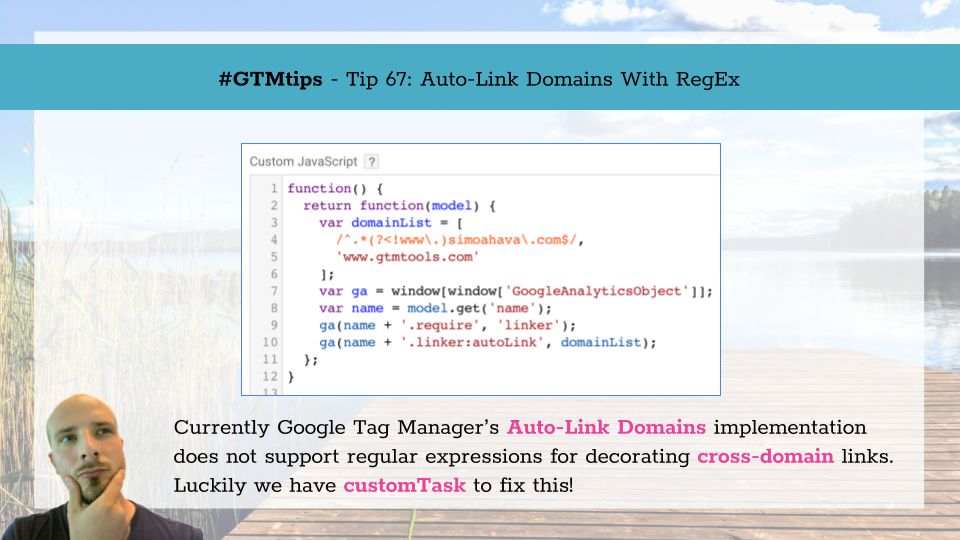Setting up cross-domain tracking in Google Analytics 4 has been well-documented.
The main departure from Universal Analytics is how cross-domain measurement is something you configure through the Google Analytics user interface rather than through implementation and JavaScript.
While this approach is obviously beneficial especially for those who lack the know-how or the resources to configure the JavaScript trackers, it does lead to problems, too.
In this article, I want to tackle these edge cases.
Updated 25 May 2021: Added information about using this with GA4. As Google Analytics 4 does not have a mechanism to disable cookie storage, only the second solution (send dataLayer events from iframe to the parent) described in this article will work for GA4.
Here I am, back with <iframe> and cross-domain tracking. I’ve published a couple of articles before on the topic, with my upgraded solution being the most recent one.

Getting cross-domain tracking right in Google Analytics is difficult. Even if you use Google Tag Manager. There are many known issues when cross-domain tracking iframes, for example.
Google Tag Manager implements the cross-domain tracking plugin quite handily via the Universal Analytics tag template, and often the easiest way to track links and form submits is to use the Auto-Link Domains option, as described in this great series of posts on cross-domain tracking by Bounteous.

Update 5 March 2019 due to GTM not supporting negative lookbehinds any more.
Google Tag Manager makes it fairly easy to do cross-domain tracking. Basically, you list the hostnames you want to automatically decorate with linker parameters in the Auto-Link Domains field of your Page View tag, and that takes care of decorating the URLs with the necessary parameter. It’s dead easy, even if there are a bunch of traps you need to watch out for (see my post on troubleshooting cross-domain tracking issues).

To be fair, this tip isn’t just for Google Tag Manager but for regular old on-page Google Analytics as well. It’s one of those little things that’s corroding your data quality without you ever realizing it. Namely, this tip is about how to handle cross-domain tracking in situations where you are sending data to multiple Google Analytics properties on the same page.
It’s a very typical scenario - you have a “local” property, which tracks only the traffic of the current site, and then a “rollup” property, where you send data from all your organization’s websites.
Cross-domain tracking, in Google Analytics, is the process of passing information stored in browser cookies from one domain to another. Due to web browsers’ same-origin policy, a browser cookie is only available to the domain it is written on and all its subdomains (by default). Since Google Analytics uses cookies to persist the Client ID, once the user moves from domain to domain it’s important to somehow pass this Client ID, too.
